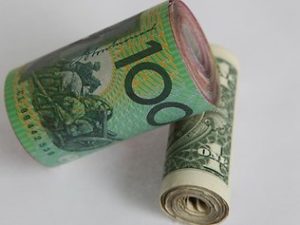 Australian dollar came off near a one-week high against its US counterpart on Thursday, as a report revealed that full-time employment in Australia decreased at the fastest pace in over a year in October.
Australian dollar came off near a one-week high against its US counterpart on Thursday, as a report revealed that full-time employment in Australia decreased at the fastest pace in over a year in October.
Having touched its highest point since October 29th at 0.9543, AUD/USD fell to a session low at 0.9466 at 1:00 GMT, after which consolidation followed at 0.9472, losing 0.57% for the day. Support was likely to be found at November 3rd low, 0.9436, while resistance was to be encountered at October 29th high, 0.9547.
Today the Australian Bureau of Statistics reported that economy lost 27 900 full-time job positions in October, marking the most considerable drop since June 2012. The total number of the employed people rose by 1 100 in October, which was considerably below expectations of a gain by 10 000. Part-time employment in the country rose by 28 900 during the same month.
At the same time, the rate of unemployment in the country held steady at 5.7% in October.
The workforce participation rate, which gauges the proportion of working-age people engaged in a job or actively looking for work, also remained unchanged at 64.8% in October, while expectations pointed a slight increase to 64.9%.
“The unemployment rate has edged higher,” Reserve Bank of Australia Governor Glenn Stevens said earlier in the week after he and his team maintained the benchmark interest rate at the record low level of 2.5% in order to spur growth in other sectors of the economy beside mining. “This is likely to persist in the near term, as the economy adjusts to lower levels of mining investment.”
RBA policymakers will probably raise borrowing costs by 15 basis points over the next year, according to Credit Suisse Group AG index, based on swaps.
“Today’s jobs figures are largely consistent with the RBA’s view on near term labour market outcomes,” Gareth Aird, an economist at Commonwealth Bank of Australia, wrote in an e-mailed note to clients, cited by Bloomberg News. “We retain our previously held view that 2.5 percent is likely to be the low point of the current easing cycle.”
Employment data came out one day after another report showed that Australia registered a deficit on its trade balance for the 21st consecutive month in September. Export towards China considerably slowed down in September, rising only 0.1%, after climbing 11.3% in August. The deficit on nation’s trade balance amounted to 0.284 billion AUD in September, from a revised deficit figure of 0.693 billion AUD a month ago. Experts had anticipated that the deficit will shrink at a lesser pace to reach 0.500 billion AUD in September.
Meanwhile, the Aussie was lower against the euro as well, with EUR/AUD cross advancing 0.55% on a daily basis to trade at 1.4267 at 7:46 GMT. AUD/NZD pair was falling 0.46% to trade at 1.1324 at 7:48 GMT.





